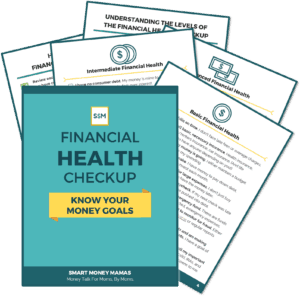It is common knowledge that if you want to build a nest egg, you need to invest. Leaving your wealth in cash will only allow its value to be eaten away by inflation over the years and will completely remove your money’s ability to work for you. However, in my opinion, the best way to destroy wealth is to invest in products you don’t understand without a plan. So, to help you get started on your investing journey, here are simple definitions of the key investment terms you need to know!
Table of Contents
Basic Security Types
- Stock or Equity: A stock represents a small piece of ownership in a public company. Stocks trade on an exchange continuously throughout the day during market open (Monday through Friday) and is based on rapidly matching buyers to sellers. Over the very long-term, 15+ years, stocks often offer the highest return of any security. However, they are also the most volatile and you can see large swings in value over time.
- Bond: A bond is debt issued by a corporation, municipality (town or state), or government. The issuer promises to pay the lenders (whoever owns the bonds) back at a specified future date, and in the meantime, pay interest on the money they borrowed. Most corporate bonds pay interest every six months.
- Mutual Fund: An investment company pools money from a group of investors and purchases a range of stocks, bonds, commodities, and/or other investments to create diversity for the investors that they wouldn’t be able to achieve individually. These funds can be bought and sold daily, but transactions only settle (actually occur) once a day at the value of the fund at the close of that day. See below for the difference between actively and passively managed mutual funds.
- ETF, Exchange Traded Fund: ETFs are very similar to mutual funds except that they trade like stocks on an active exchange. Instead of only being able to buy and sell once a day, you can buy and sell instantly. ETFs are set up to track an underlying index, like the S&P 500, and give investors a way to gain broad diversification for low investment costs.
- REITs, Real Estate Investment Trust: REITs are modeled after mutual funds with the goal of giving investors exposure to income-producing real estate. The manager of a REIT builds, owns, and manages commercial real estate. REITs have had positive performance over the past 30 years but can be very, very volatile and distributions are taxed as ordinary income so are best utilized in tax-deferred accounts like IRAs.
- Alternatives: Stocks, bonds, and cash are the 3 main asset classes. Any investment types outside of those three classes are considered alternatives and include commodities, real estate, hedge funds, and more. These asset classes are typically risky and less liquid (hard to sell quickly without diminishing value), so are not recommended in considerable size for smaller investors.
What to Know About Yourself
- Asset Allocation: How you choose to divide your investments across the three main asset classes (stocks, bonds, and cash). Your asset allocation should reflect how much risk you are willing to take, how long before you will need to withdraw your investments and your personal goals.
- Net worth: A very useful way to gauge personal finance progress and investment goals. It consists of adding up all your assets and investments (value of your home, the current value of your cars, money in your checking and investment accounts) and subtracting the value of all your debts (mortgage, student loans, credit card debt, car loans, etc.).
- Time Horizon: The amount of time until you will need your investment. This helps you determine your risk tolerance and proper asset allocation. For example, how you invest money for a down payment you plan to need in two years will be very different to the way you invest for your retirement in 20 years.
Investment Styles
- Dollar cost averaging: The practice of investing a consistent amount of money, on a regular basis, regardless of the price of the investment. By putting the same amount of money in every time, you naturally buy more units of stock or of the mutual fund when the price is low and less when the price is high, helping long-term returns.
- Three Fund Portfolio: Achieving diversification in the two main investment assets, stocks, and bonds, using low-cost index funds or ETFs. You choose three funds (one domestic stock fund, one international stock fund, and one bond fund) and manage your asset allocation across just those three funds.
- Dividend or Income Investing: An investment strategy where you purchase stocks in mature companies that pay out part of their profits in regular dividends. You profit both from the dividends and potentially through an increase in the value of the underlying stock if the company happens to continue to grow or increase its dividend payments.
- Growth Investing: An investment strategy where you invest in stocks where you think the company has good growth potential. You profit by purchasing stocks, holding them as they grow, and selling when the stock price represents the company’s larger size and value.
- Value Investing: An investment strategy where you choose stocks that you think are trading below their real value. You profit by selling the stocks once they appreciate to their true value.
Top Investment Fund Terms
- Actively Managed: An actively managed mutual fund is run by investment managers that are regularly buying and selling different stocks and bonds in an effort to outperform the market. Fees on these funds are typically much higher than passively managed mutual funds or ETFs and rarely outperform the market over the long-term.
- Benchmark: The benchmark is the underlying index or asset class an actively managed mutual fund, investment advisor, hedge fund, or individual is trying to beat. For example, if you chose to buy and sell individual stocks you could measure your success by your ability to gain higher returns than the S&P 500 over the long-term.
- Expense ratio: The amount you must pay annually to cover the fund operating expenses and management fees for a mutual fund. This is expressed as a percentage, with the fund’s total operating cost divided by the average value of the fund’s assets. For example, a fund with a 0.50% expense ratio would charge you $5 a year for a $1,000 investment.
- Passively Managed (Index Fund): A fund that’s purpose is to replicate an underlying index, such as the S&P 500 or Total Bond Market Index, and only buys and sells when rebalancing its investments to match that index. These funds typically have the lowest investment cost.
General terms
- Bear Market: When companies are under pressure, investors are selling, and the market is decreasing in value.
- Bull Market: When companies are growing, investors are excited about market prospects and are buying stocks, and the market is increasing in value.
- Capital Gain: The profit or loss you make on the difference between the purchase price of a security and your sale price. For instance, if you bought stock XYZ for $50 and sold it for $55, your capital gain would be $5.
- If you held the security for less than a year, the capital gain is determined to be short-term, and if you held it for more than a year it is long-term. Long-term capital gains generally have lower tax rates than short-term.
- Dividend: A portion of a company’s profits paid out to stockholders. Companies are not required to pay dividends but many mature companies pay them as an incentive for you to hold their stocks even when they may not expect much future growth.
- Fiduciary Duty: A fiduciary is a person that is obligated to act in ways that they believe, in good faith, best benefits their clients. A fiduciary is ethically bound to serve the interest of their clients ahead of their own. Currently, only 6.4% of the financial advisors in the United States have a fiduciary duty to their clients.
- Index: A stock index is a group of public companies that are used to approximate the performance of the entire market or of a specific subset of the market. The two most quoted indices in the U.S. are the DJIA (Dow Jones Industrial Average) and the S&P 500.
- Stock Exchange: A stock exchange operates as a market where stock buyers can be matched quickly and efficiently with stock sellers. Today, most stocks are traded electronically, instead of live on a stock exchange floor the way things were done in the past. The two biggest stock market exchanges in the U.S. are the New York Stock Exchange (NYSE) and the National Association of Securities Dealers Automated Quotations (NASDAQ).
Understanding Your Investments
I hope these quick definitions and basic terms helped you gained a little understanding of what you read in the newspaper, see discussed by personal finance bloggers, see in your 401(k) statement and hear from investment advisors. If you want to make use of your new-found lingo to dive further into the basics of investing, you can check out what everyone needs to know about the stock market, the basics of dollar cost investing, and why you should invest, even in peak markets.
If you feel yourself getting in over your head, remember that there are plenty of people out there that profit off convincing others that success in investing is complicated. The most common path to success is a simple plan executed consistently over the long-term!
What investment terms have you come across that you didn’t understand? What terms did you wish you knew when you started investing? Drop them in the comments to see them included in this list!





HI Chelsea,
Just found your blog a few days ago. I am still reading your March posts, but feel that l have to drop you a few sentences. Your topic are very interesting and inspiration. When you talking about investing you seems to be very informative and explaining in a way that is easy to understand. A lot of people have fear and lack of knowledge as to how to start investing. Your future posts l would love to see more posts about investment, retirement and about life in general.
Keep up the good work and look forward to read your post